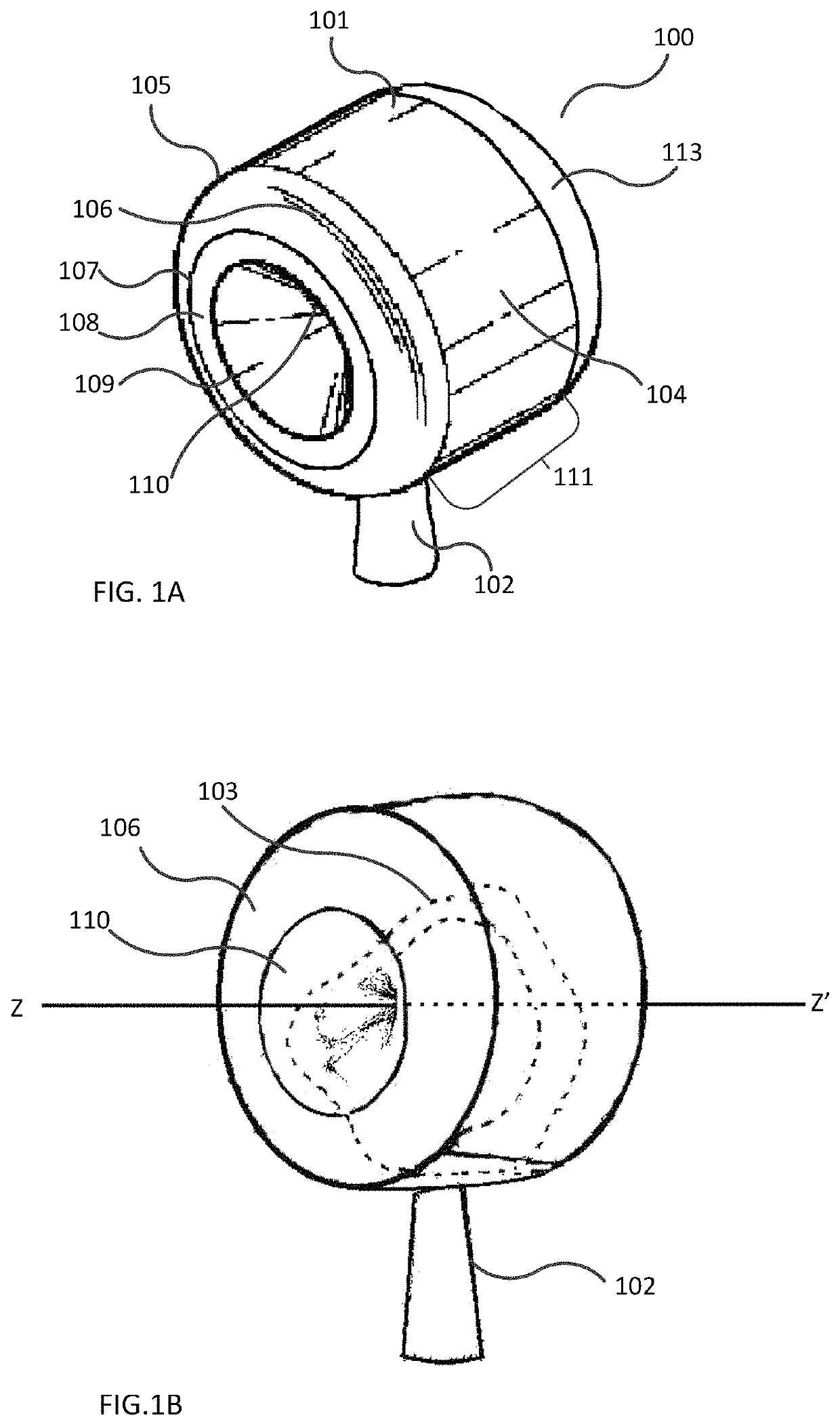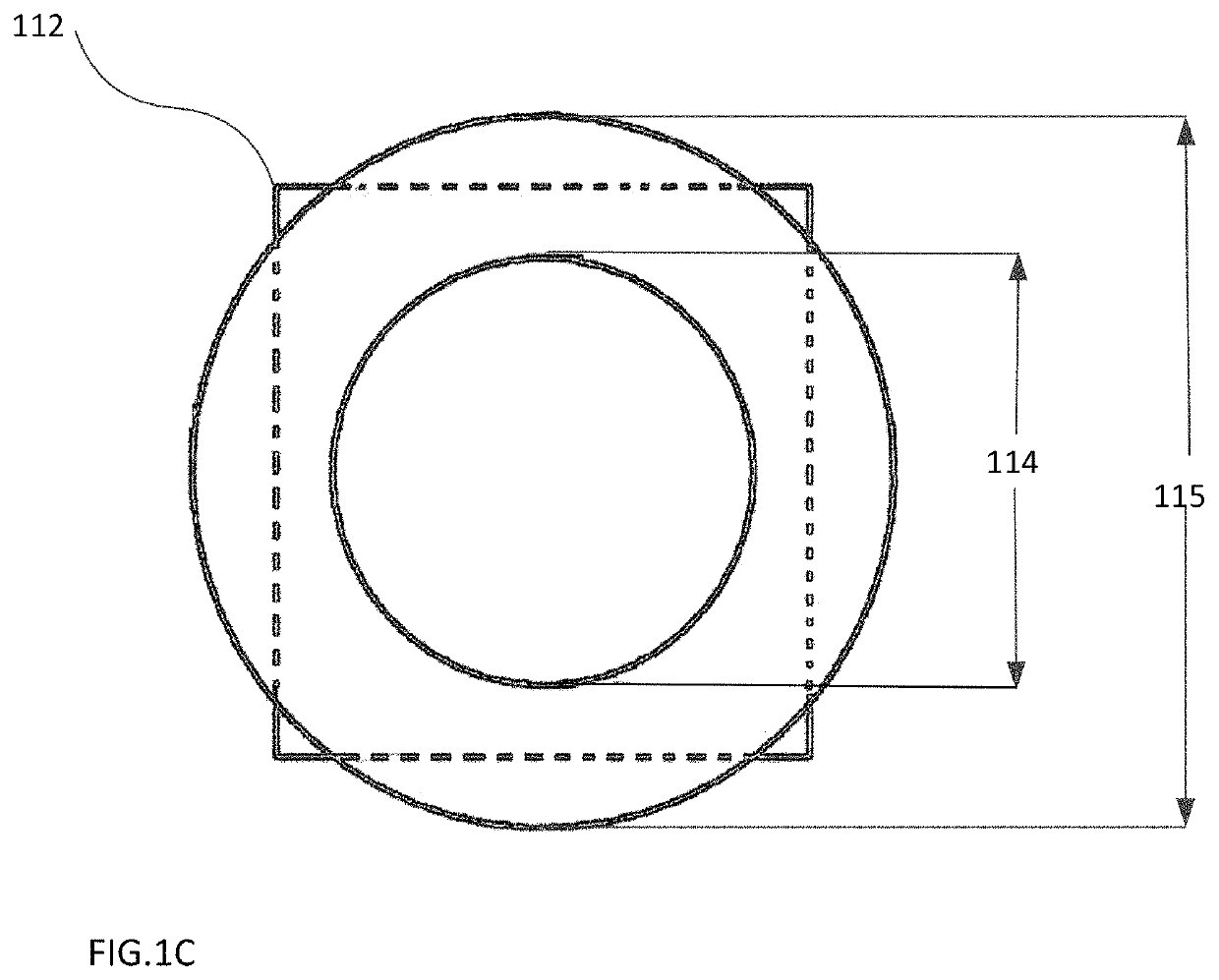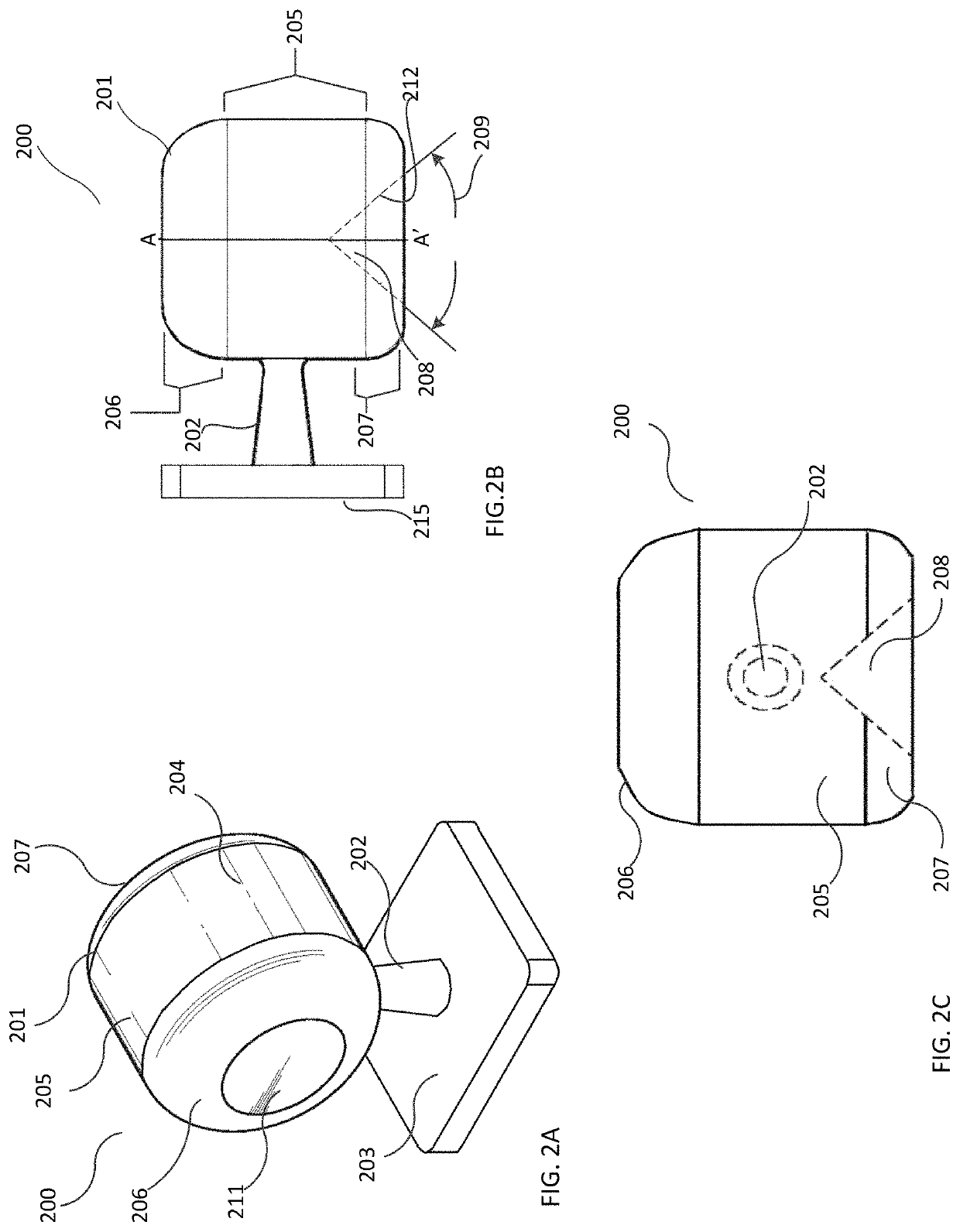Dental restoration preform and method of making the same
a dental restoration and preform technology, applied in the field of dental restoration preforms and methods, can solve the problems of increasing the amount of time a patient must wait for repair, and achieve the effects of reducing the time to create reducing the time for creating and reducing the time for a custom finished produ
- Summary
- Abstract
- Description
- Claims
- Application Information
AI Technical Summary
Benefits of technology
Problems solved by technology
Method used
Image
Examples
examples 1-21
[0061]Twenty-one zirconia crowns of multiple tooth types (numbers) were shaped from sintered zirconia preforms by the methods described herein.
[0062]Pre-sintered zirconia milling blocks were obtained (BruxZir® Shaded milling blocks, Glidewell Direct, Irvine, Calif.) and milled into cylindrically shaped preforms. The preforms having a circular cross-section were milled by standard milling procedures incorporating an enlargement factor calculated from the block density. The intermediate pre-sintered shaped forms had a cylindrical body, with a top and bottom end, a stem having a first stem end equidistance from the top and bottom ends, the stem extended orthogonally from the center portion relative to the length of the cylindrical body, an attaching member attached to a second stem end, substantially as depicted in FIG. 1A. The preforms had a cavity extending inwardly from a bottom end face. The stem had sufficient length between the attaching member and the cylindrical body for positi...
examples 22-25
[0068]Zirconia crowns were shaped from sintered zirconia preforms that were made substantially according to the methods provided in Examples 1-21.
[0069]A restoration design was created for a second molar (tooth number 15) using a dental CAD system (IOS™ FASTDESIGN) based on patient scan data. The restoration design was nested within a computer model of a preform. The size and shape of the preform provided full rotation of the restoration design around the z-z′ axis providing alternate locations on the crown restoration design for positioning the preform stem. The restoration design was nested four times to provide four nested designs, and in each nesting operation, the stem of the preform was positioned in one of four different locations, as indicated in Table 2. Nesting positions included placement of the Y-axis of the stem between mesial contact area and buccal surfaces (mesio-buccal), between distal contact area and buccal surfaces (disto-buccal), between distal contact area and ...
PUM
| Property | Measurement | Unit |
|---|---|---|
| width | aaaaa | aaaaa |
| diameter | aaaaa | aaaaa |
| diameter | aaaaa | aaaaa |
Abstract
Description
Claims
Application Information
 Login to View More
Login to View More - R&D
- Intellectual Property
- Life Sciences
- Materials
- Tech Scout
- Unparalleled Data Quality
- Higher Quality Content
- 60% Fewer Hallucinations
Browse by: Latest US Patents, China's latest patents, Technical Efficacy Thesaurus, Application Domain, Technology Topic, Popular Technical Reports.
© 2025 PatSnap. All rights reserved.Legal|Privacy policy|Modern Slavery Act Transparency Statement|Sitemap|About US| Contact US: help@patsnap.com



